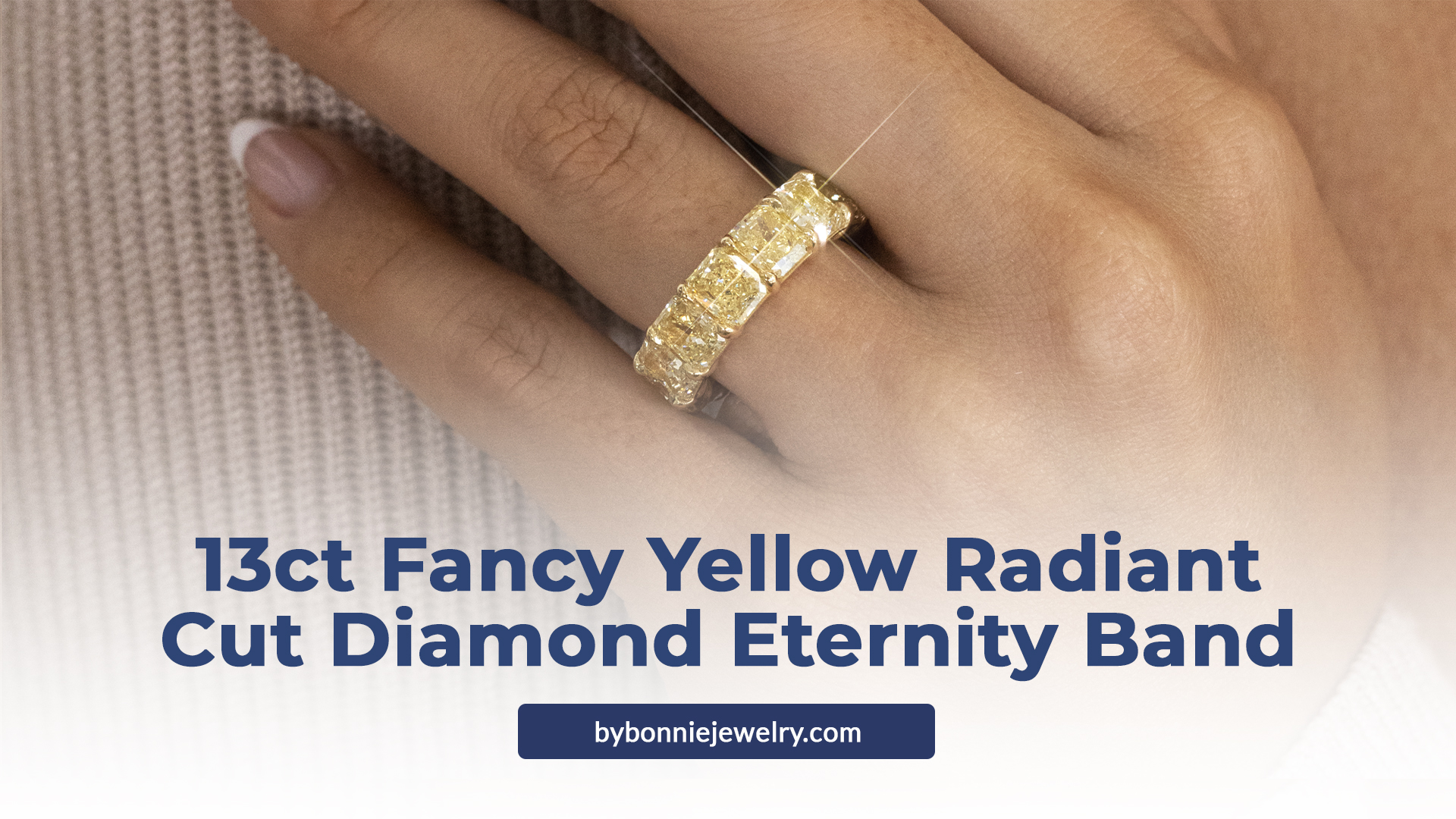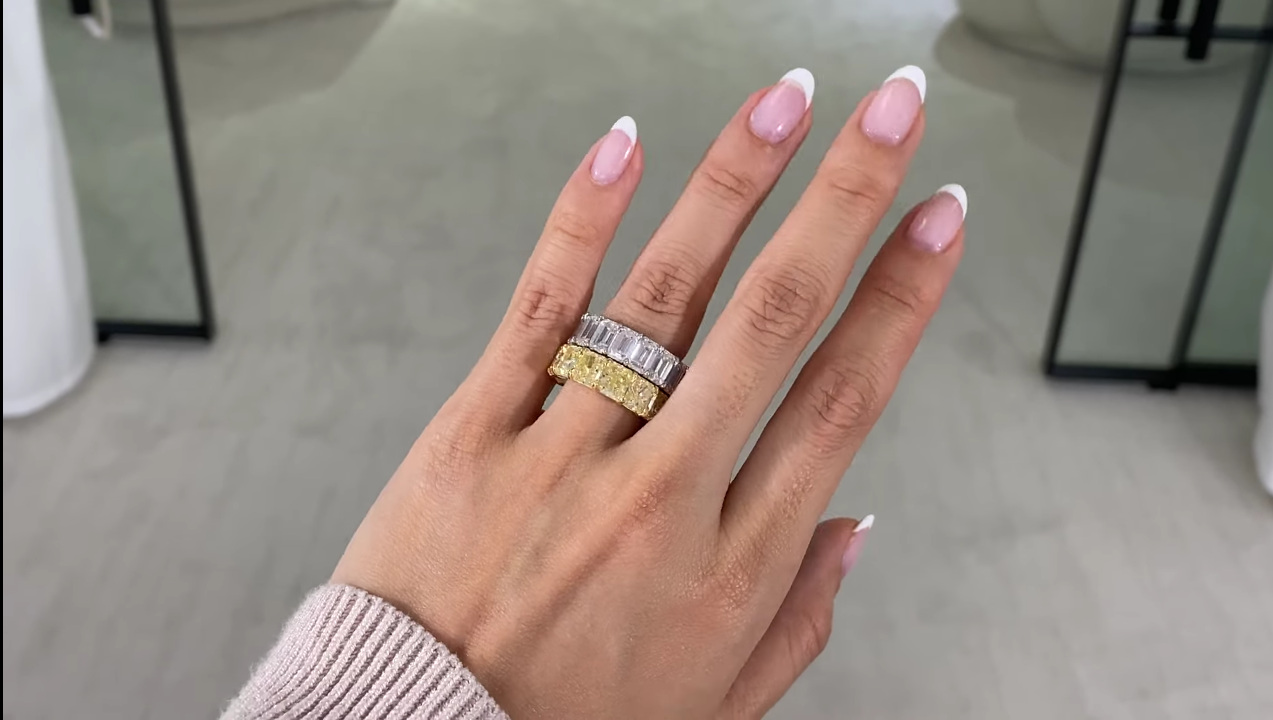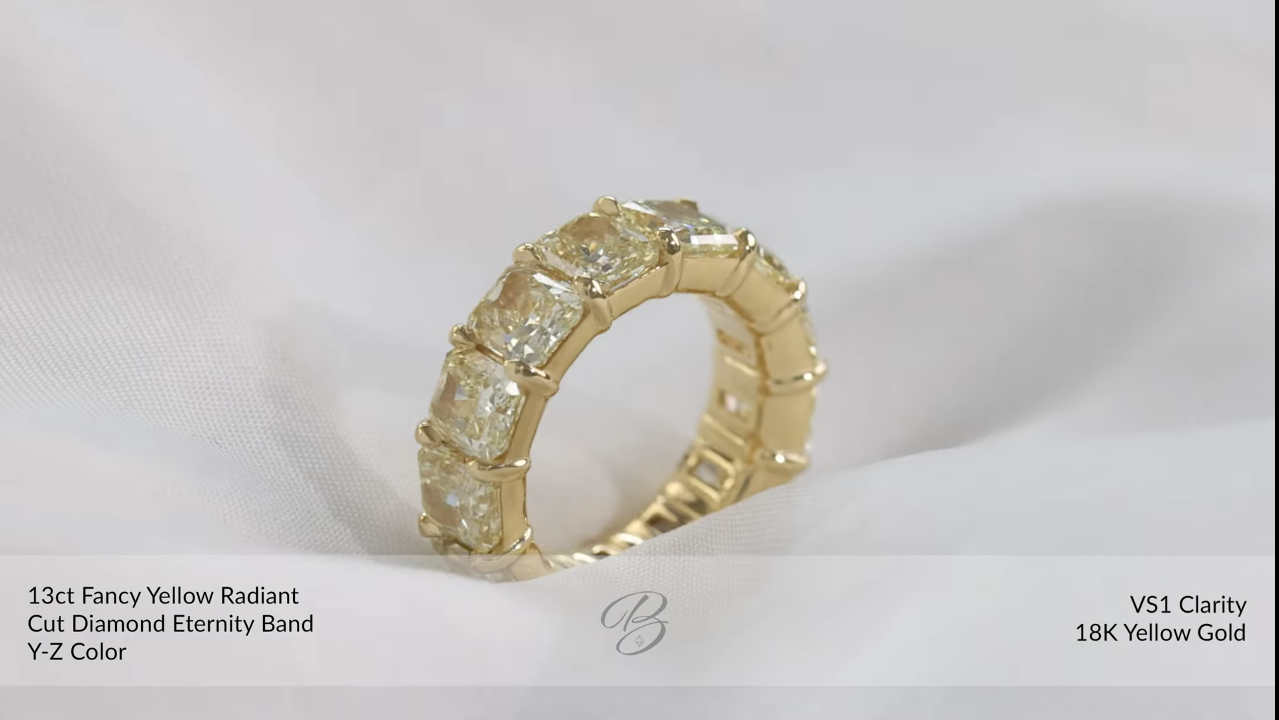13ct Fancy Yellow Radiant Cut Diamond Eternity Band

13ct Fancy Yellow Radiant Cut Diamond Eternity Band
Diamonds have always held a special allure, captivating us with their timeless elegance and mesmerizing sparkle. While we're familiar with the classic beauty of white diamonds, there exists a fascinating world of colored diamonds, each boasting a unique and enchanting hue that takes their beauty to a whole new level.
In this blog, we'll dive into the captivating realm of colored diamonds and explore why they are an absolute must-have in any diamond collection. From their rare and valuable nature to their ability to express individuality and make a bold fashion statement, colored diamonds have a special place in the hearts of gemstone enthusiasts and collectors.
Colored Diamonds 101
When it comes to diamond color grading, we have a range that goes from D (colorless) to Z (near colorless). However, once we surpass Z, we enter the realm of fancy color grading, which is a whole different category from colorless diamonds. The value of diamonds generally increases as we move up the colorless chart, with D color being highly expensive and desirable. However, once we venture into fancy color territory, the value takes a different turn. Initially, it decreases but then rises again, making fancy color diamonds highly valuable. Now, let's delve into the details of a particular ring.
Many people often wonder about fancy color diamonds, especially when they already own colorless ones. For me, one of my favorite choices is a stunning solitaire yellow diamond with a halo of pavé diamonds surrounding it. This combination creates a breathtaking effect, especially for earrings. Personally, I cherish a two-carat yellow diamond that my husband gave me on Valentine's Day. It's part of a three-stone ring, and I absolutely adore wearing it on a regular basis.
13ct Fancy Yellow Diamond Eternity Band


Introducing this exquisite eternity band, adorned with natural yellow diamonds, each weighing one carat. This stunning 13-carat diamond ring showcases the brilliance and allure of natural yellow diamonds.
Natural Colored Diamonds VS Lab Grown Colored Diamonds
Natural colored diamonds and lab grown colored diamonds are very different in terms of their origins, formation processes, and market value.
Both can vary a lot in color, hue, overtone and saturation, but natural colored diamonds are exceptionally rare while lab grown colored diamonds can be reproduced quickly.
Currently, the lab-grown versions of colored diamonds haven't quite perfected the exact color tones. There can be noticeable differences in appearance between lab-grown and natural colored diamonds. The value of a large natural pink diamond, for example, can reach millions of dollars, whereas lab-grown pink diamonds often have noticeable orange overtones and can cost as low as $1000.
When it comes to lab-grown colored diamonds, achieving the exact color tones found in natural colored diamonds is still a challenge. The process of growing diamonds in a laboratory involves recreating the conditions under which diamonds form deep within the Earth. While lab-grown diamonds can be produced in a variety of colors, replicating the precise shades and nuances found in natural colored diamonds is not yet perfected.
Natural colored diamonds derive their unique hues from impurities and structural defects that occur during their formation over millions of years. These impurities can include elements such as nitrogen, boron, or hydrogen, which interact with the carbon atoms to produce different colors. The intricate process by which these impurities are incorporated into the diamond's crystal lattice results in the wide spectrum of natural colored diamonds we see today.
In contrast, lab-grown diamonds are created through either high-pressure, high-temperature (HPHT) or chemical vapor deposition (CVD) methods. While these processes can produce diamonds with vibrant colors, replicating the specific impurities and defects that lead to the intricate colorations seen in natural colored diamonds remains a challenge.
As a result, lab-grown colored diamonds may exhibit slight differences in color tones and saturation when compared to their natural counterparts. For instance, lab-grown pink diamonds may have noticeable orange overtones, making them distinguishable from natural pink diamonds. However, ongoing advancements in diamond-growing techniques continue to bridge the gap between lab-grown and natural colored diamonds, offering more options for those seeking colored diamonds with precise color tones.
Tips on Wearing Big Diamond Bands
Here's a helpful tip for saving money when purchasing a yellow diamond: Jewelers often set Y or Z color diamonds, which haven't entered the fancy color range, in 18, 20, or 22 karat yellow gold baskets.
This clever technique brings out the yellow color of the diamond, providing a larger carat size and more value on your finger. In this particular case, we have individually certified one-carat diamonds, each with Y and Z color grades.
Experts in yellow diamonds will tell you that when set in a saturated yellow metal, the overall appearance is comparable to fancy yellow or even fancy intense yellow diamonds. Opting for a ring like this, with matching fancy color grades, would significantly increase the price tag.
Tips for Storing and Pairing Thick Wedding Bands
Personally, I have a fondness for bold and substantial pieces of jewelry. Take my personal band, for example, which boasts 13 carats of natural emerald-cut diamonds. It's a fantastic stack ring that adds a vibrant burst of color, especially when paired with a thick and chunky band. Just look at it!


With the emerald-cut diamond on top and the radiant-cut diamond at the bottom, it's simply breathtaking. I can envision this ring gracing the finger of a celebrity on the red carpet.
Now, fair warning, if you prefer a more minimalist style, this might not be your cup of tea. Personally, I adore emerald-cut diamonds, and if you already own an emerald-cut three-stone ring and want to add some flair, a band like this is an absolute must-have! You can even wear it alongside the three-stone ring, like Kim Kardashian has done with her own impressive emerald-cut band. However, I find that when the ring is this large, it creates a captivating contrast when worn on a different hand.
If you're interested in making such an investment, you can find the product link here. Trust me, it's a beauty!
Matching Colored Diamond Rings by Color
Color matching is a crucial aspect when it comes to yellow diamonds, and it can be incredibly challenging. When I undertake color matching, I ensure that the center stone and the pavé stones are matched in terms of their color. However, color matching for colored diamonds is even more difficult because we have to consider factors like hue, saturation, and overtone.
These elements make the process of matching stones truly intricate and complex. The level of difficulty involved in creating a masterpiece like this is what sets it apart. If you were to go to a high-end heritage store, you would likely pay a substantial amount for a piece like this.


If you're interested in having Bonnie create a stunning piece for you, feel free to check out this link and let us know what type of ring you are looking for and help us help you find and make the ring of your dreams!








